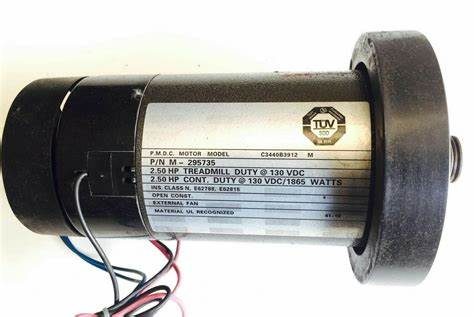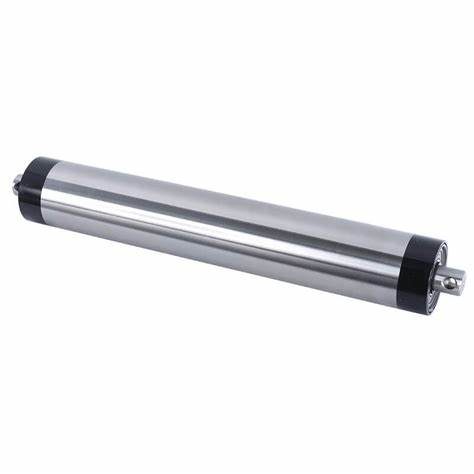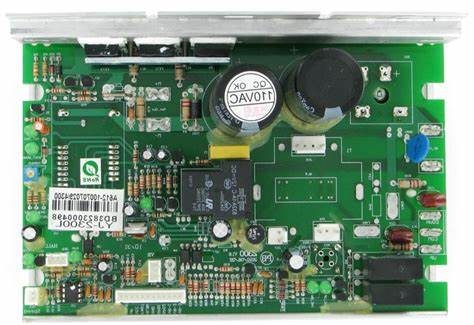Identifying the Problem
Is your treadmill not starting up? Or maybe it’s turning off while you’re using it? Before making any adjustments or calling a repairman, try to identify the problem yourself. By doing so, you can save yourself time and money. Here are some common signs that your treadmill motor might need fixing:
1. It won’t start
If your treadmill won’t start, the first thing you should check is the power source. Is your machine properly plugged in? Is the outlet it’s connected to functioning correctly? If everything seems okay, then the problem might be with the motor itself.
Another possible cause for a treadmill failing to start could be a tripped circuit breaker. Most treadmills have a built-in circuit breaker that protects them from power surges. If your machine is regularly tripping the circuit breaker, it could be a sign that there’s a problem with the motor or the machine’s electrical components.
Finally, a treadmill that won’t start could be a sign of mechanical problems. Check the belts and pulleys to see if everything is properly aligned and tightened. A common issue with treadmills is that the belt slips or slides to one side, which can cause it to stop moving entirely. Make sure that the belt is centered and tightened properly so that it remains stable while in use.
2. It’s making strange noises
If your treadmill is making unusual sounds, then it could be a sign of a motor problem. Grinding noises are often an indication of worn-out bearings that are either on the front or back rollers of the treadmill. Squeaking sounds, on the other hand, are often a sign of a loose or worn-out belt.
Before calling a repairman, check the bearings and the belt tension. Make sure that the belt is tightened correctly and lubricate the rollers if necessary. If the problem persists, you may need to replace one of these components.
3. It’s turning off during use
One of the most frustrating problems with treadmills is that they can turn off even while in use. This could be a sign of a problem with the electrical components of your machine. If your machine shuts off when you’re running it, check the power cord and circuit breaker. Make sure that everything is plugged in securely and that the circuit breaker hasn’t been tripped.
Another possibility is overheating. If the motor is working too hard, it could cause the machine to overheat and shut down. To prevent this, make sure that your treadmill is properly lubricated and that the belt is adjusted correctly. You might also consider turning down the speed or incline setting to reduce the workload on the motor.
4. It’s vibrating or shaking
If your treadmill is vibrating or shaking, then it could be a sign of an uneven belt. As mentioned earlier, an improperly aligned belt can cause it to slip or shift to one side, which can lead to vibrations. The rollers might also need lubrication if they’re not functioning smoothly.
A more serious issue could be worn-out bearings or a warped frame. In this case, it’s best to consult with a professional technician who can diagnose and repair the problem.
Conclusion
Identifying the problem with your treadmill is the first step in getting it back to working order. Depending on the issue, you might be able to handle the repairs yourself or you might need to call in a professional. Either way, taking the time to properly diagnose the problem can save you time and money in the long run.
Checking for Loose Connections
If your treadmill is not powering on, the first thing you should do is check all the connections. You may have accidentally knocked something loose while moving the treadmill or during a workout session. Loose connections can cause a wide range of issues, from simple power failure to complete motor breakdown.
Start by unplugging your treadmill from the power source, let it sit for a few minutes, and then open up the motor cover. Examine all the wires and connections one by one. Make sure that plugs are firmly in place and that there are no loose or frayed wires. If you notice any issues, use a soldering iron to solder them back together or replace the faulty components entirely.
When checking for loose connections, pay extra attention to the power cord, which is usually located at the back of the treadmill. Make sure that it’s securely connected to the motor, console, and power outlet. If not, plug it back in and give it a firm tug to ensure that it’s not going to slip out of place again.
You may also want to inspect the power switch, which is usually located on the side of the console. Make sure that it’s not loose or damaged in any way, and that it’s properly connected to the wiring. If there are any signs of wear and tear, consider replacing the switch altogether.
Overall, checking for loose connections is a simple and effective way to troubleshoot your treadmill motor. Even if you’re not experienced with electrical repairs, you can still take a closer look at the wires and plugs to see if anything looks out of place or disconnected. Once you’ve identified the issue, you can then take the necessary steps to fix it and get your treadmill up and running again.
Lubricating and Realigning the Motor
Lubricating and realigning the motor are important tasks for maintaining the longevity and effectiveness of your treadmill. Over time, the friction and heat generated by the motor can cause it to wear down, resulting in decreased performance and potentially costly repairs. By regularly lubricating and realigning your treadmill motor, you can keep it running smoothly and efficiently. Here is how to do it:
Contents
1. Lubricating the Motor
Lubricating the motor is a simple process that involves applying a lubricant to the motor’s moving parts to reduce friction and prevent wear and tear. To lubricate your treadmill motor, follow these steps:
- Locate the motor hood on your treadmill.
- Remove the screws or clips holding the motor hood in place.
- Carefully lift the motor hood off the treadmill.
- Identify the motor’s moving parts, such as the belt and pulleys.
- Apply a small amount of treadmill lubricant to each moving part using a cloth or applicator.
- Replace the motor hood and secure it in place with the screws or clips.
It’s recommended to lubricate your treadmill motor every three to six months, depending on your usage. Make sure to consult your treadmill’s user manual for specific instructions on the type and amount of lubricant to use for your treadmill model.
2. Realigning the Motor
Realigning the motor involves adjusting the belt tension and position to ensure that it runs smoothly and evenly. A misaligned belt can not only cause a lot of noise, but it can also cause premature wear and tear on the motor and other treadmill components. To realign your treadmill motor, follow these steps:
- Locate the belt adjustment screws or bolts on your treadmill.
- Use a wrench or screwdriver to loosen the screws or bolts on both sides of the motor.
- Carefully adjust the position of the motor by pulling it slightly to one side or the other until the belt is aligned with the center of the treadmill deck.
- Once the motor is in the correct position, tighten the screws or bolts on both sides of the motor.
- Carefully test the treadmill to ensure that the belt runs smoothly and evenly.
You should realign your treadmill motor every three to six months, depending on your usage. Consistently maintaining the correct alignment of the motor and belt will help ensure your treadmill lasts for years to come.
3. Additional Tips for Maintaining Your Treadmill Motor
Beyond lubricating and realigning your treadmill motor, there are a few additional tips to help keep your treadmill motor running smoothly and efficiently:
- Clean your treadmill regularly to prevent dust and debris from accumulating on the motor and other components. A clean treadmill is a happy treadmill!
- Do not overload your treadmill. Make sure to follow your treadmill’s user manual for weight limits and other specifications.
- Avoid using your treadmill on uneven surfaces or in excessively hot or humid environments, as this can cause additional wear and tear on the motor.
- Finally, be sure to regularly inspect your treadmill’s motor and other components for signs of wear and tear, such as loose screws or worn belts. Catching and fixing these issues early can help prevent more significant and costly repairs down the line.
By following these simple tips and techniques for lubricating and realigning your treadmill motor, you can help keep your treadmill running smoothly and performing at its best for many years to come.
Replacing Faulty Parts

If you have identified that the issue with your treadmill motor is with a specific part, you may need to replace that part. Here are some common treadmill motor parts that may need to be replaced:
Belt

If your treadmill belt is slipping or fraying, or if it is making a loud noise while in use, it may need to be replaced. To replace the belt, first, unplug the treadmill from the wall. Use a screwdriver to remove any screws holding the belt and the side guards in place. Remove the belt and clean any dust or debris from the area. Install the new belt according to the manufacturer’s instructions and reattach the side guards.
Rollers

If your treadmill is making a thumping or grinding noise, it may be due to worn out rollers. To replace the rollers, first, unplug the treadmill from the wall. Use a screwdriver to remove any screws holding the roller covers in place. Remove the old rollers and clean any dust or debris from the area. Install the new rollers according to the manufacturer’s instructions and reattach the roller covers.
Motor brushes

If your treadmill motor is not starting, it may be due to worn-out motor brushes. To replace the motor brushes, first, unplug the treadmill from the wall. Use a screwdriver to remove the motor cover. Locate the old motor brushes and remove them. Clean any dust or debris from the area and install the new motor brushes according to the manufacturer’s instructions.
Circuit board

If your treadmill is not working at all, the issue may be with the circuit board. To replace the circuit board, first, unplug the treadmill from the wall. Use a screwdriver to remove the motor cover and locate the circuit board. Remove the old circuit board and install the new circuit board according to the manufacturer’s instructions.
It’s important to note that not all issues with your treadmill motor can be fixed by simply replacing faulty parts. If you have gone through the above steps and are still experiencing issues with your treadmill motor, it may be time to call in a professional treadmill repair technician.
Calling a Professional Technician if Necessary
If you’ve tried all the steps we outlined earlier and you’re still having trouble with your treadmill, it may be time to call in a professional. There’s no shame in admitting defeat and handing the job over to someone who knows exactly what they’re doing. In fact, it’s a smart move that may end up saving you a lot of hassle and frustration.
When searching for a professional technician, do your research and make sure you’re choosing someone who specializes in treadmill repairs and has a lot of experience under their belt. You want to ensure that the person you choose is reliable, knowledgeable, and can provide you with speedy and efficient service.
One option for finding a reputable technician is to contact the manufacturer of your treadmill. They may be able to provide you with a list of certified repair technicians. Alternatively, you can use online directories or search engines to find technicians in your local area.
Once you’ve found a technician you like, give them a call and describe the problem you’re experiencing with your treadmill. They may be able to provide you with a rough estimate of the cost and the length of time it will take to fix. If you’re comfortable with their assessment, you can go ahead and book an appointment for them to come out and take a look at your treadmill.
Before the technician arrives, make sure you’ve cleared a space for them to work and removed any obstacles that may get in their way. This will help to speed up the repair process and ensure that the technician can do their job safely.
During the repair process, it’s important to communicate openly and honestly with the technician. Be sure to ask questions if you’re unsure about something or if you simply want to know more about the repair process. A good technician will be happy to explain what they’re doing and why they’re doing it.
Once the repair is complete, the technician will likely test out your treadmill to make sure it’s working as it should. They may also provide you with some tips on how to maintain your treadmill to prevent future problems.
Finally, be prepared to pay for the repairs. The cost of fixing a treadmill motor can vary widely depending on the severity of the problem and the technician you choose. Make sure you get a detailed quote before the work begins so you can budget accordingly.
Remember, sometimes the best course of action when it comes to fixing a treadmill motor is to leave it to the professionals. They can provide you with expert advice, speedy service, and the peace of mind that comes with knowing your treadmill is in good hands.
